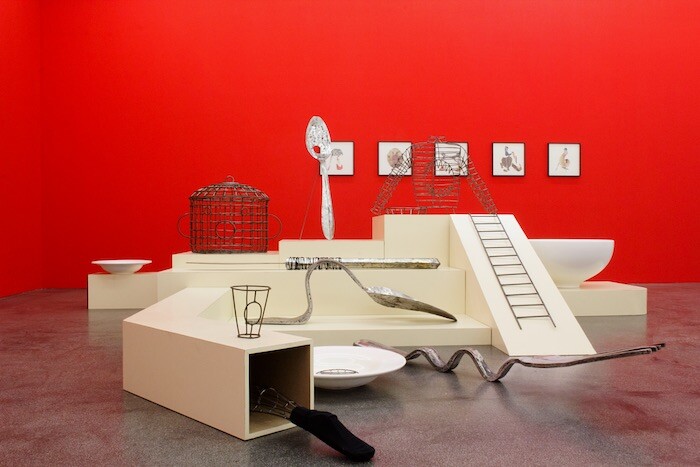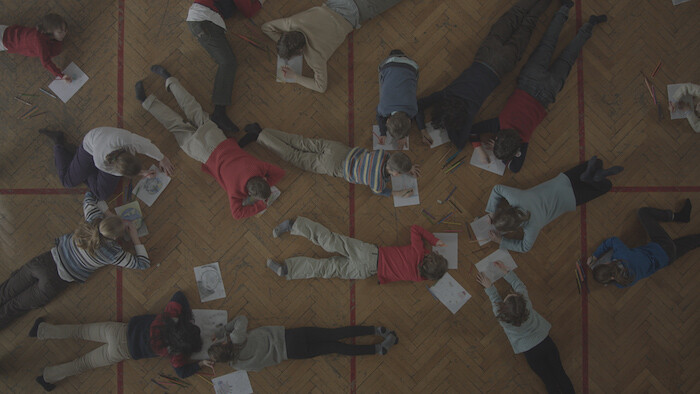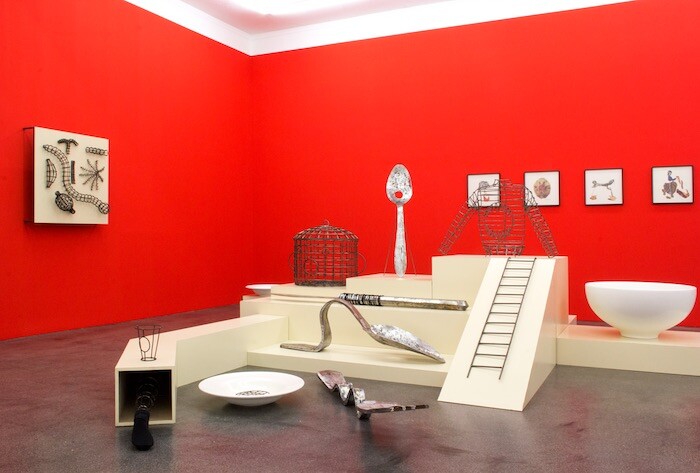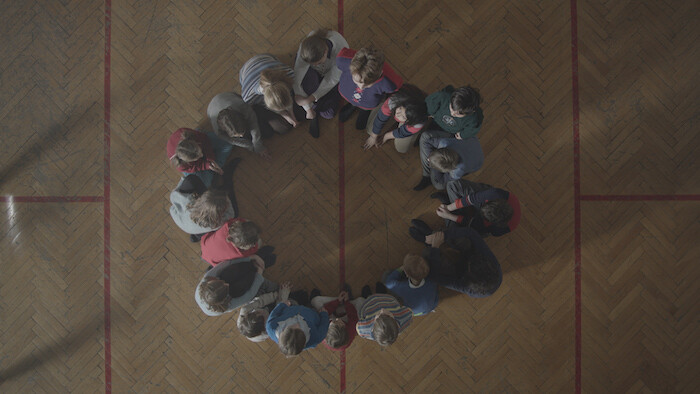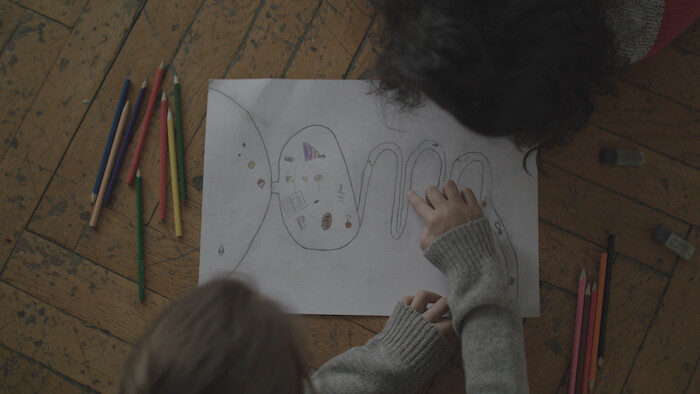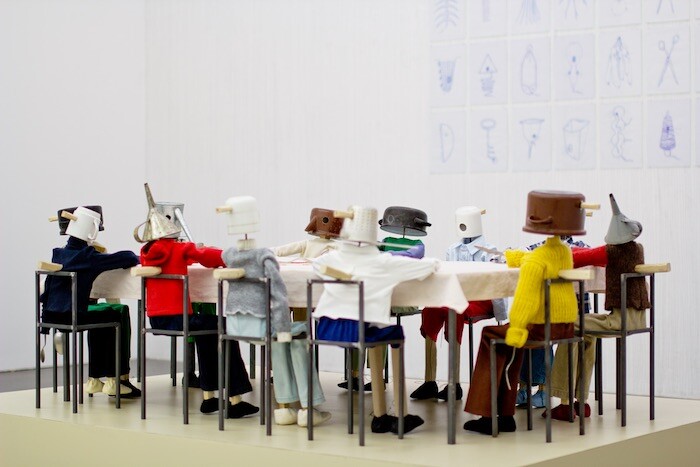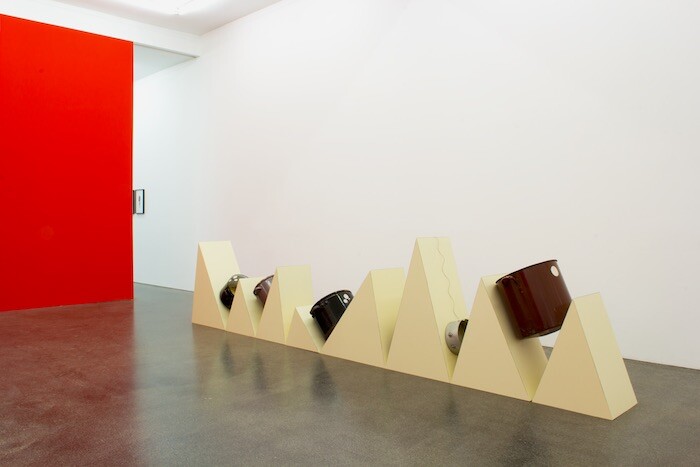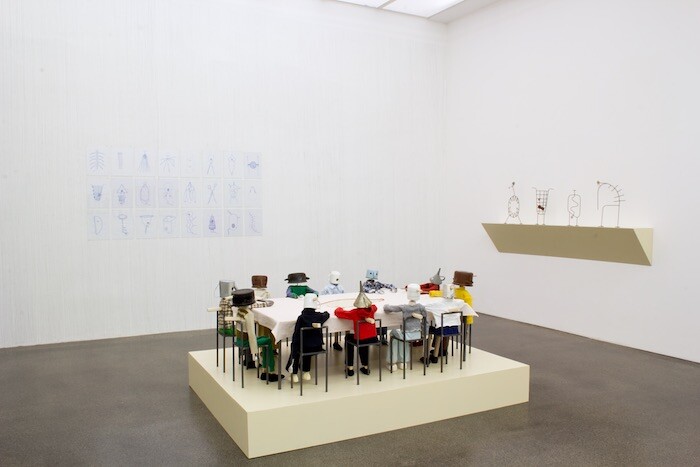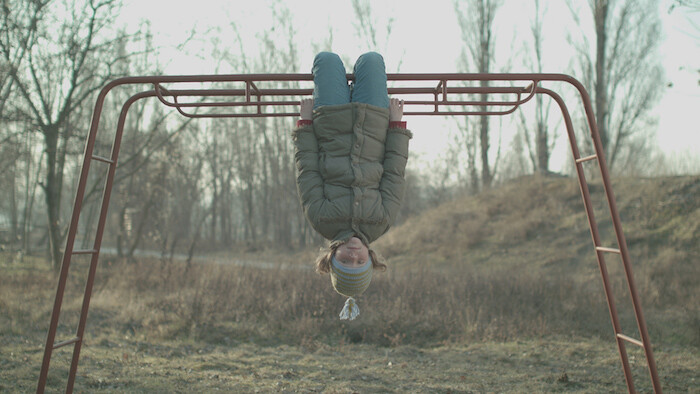“What have you eaten today?” a metallic voiceover inquires. The reply, uttered by a child, hesitantly, is “nothing.” Yet in the course of the transitory interrogation that unfolds in the middle of Eva Kot’átková’s most recent film Stomach of the world (2017), currently being shown by the Polyeco Contemporary Art Initiative at the Benaki Museum in Athens, and related to an exhibition currently on view at Berlin’s Meyer Riegger, nothing becomes plenty of something. We listen to the child catalog thoughts and lost objects as if filling the void of sustenance. The empty stomach is repurposed into a container for the spam of life. Crammed with information, it becomes capable of expelling appetite and even anxiety from the system. Hunger, it seems to convey, is hunger for fabrication, not food.
Kot’átková’s installations tend to submerge the observer in such morbid enterologies of infant worlds. And infant worlds, we quickly gather, are no democratic assemblies. Working with collage, drawing, sculpture, film, and, lately, gallery walls, the artist has forged an idiosyncratic totality of these worlds over the years, which almost emulates an organism that sustains invariable aesthetics, yet generates ever-new contingencies connected to childhood. Kot’áková thereby characterizes childhood as a battery of budding bureaucracy. Already in the early stages of development social behavior is administered with regulations, restrictions, and the regiment of melancholy permeating free articulation. The dimmed chromatics and frugal material constructions distinct to Kot’átková’s works are thus not only a cultural code for her upbringing in socialist Czechoslovakia, so often quoted as a distinguishing signifier by her critics. Rather, they are the elements of the grim ambience that has enveloped the globe after the grand caesura of 1989. More than ever, bureaucracy engulfs situations where resources of any kind are distributed. “For all its celebrations of markets and individual initiative,” anthropologist David Graeber writes about the internal logic of the West in his recent book, “the alliance of government and finance often produces results that bear a striking resemblance to the worst excesses of bureaucratization in the former Soviet Union or former colonial backwaters of the Global South.”1 And it is this alliance that “employs legions of [bureaucrats],” whose primary function is not only, as Graeber asserts, “to make poor people feel bad about themselves,”2 but to prevent them from participating in prosperity. The presentation of Stomach of the world at the Benaki Museum (during but not within the scope of Documenta 14) facilitates an appreciation of exactly how contemporary Kot’átková’s work is: the austerity measurements agreed upon by the Greek parliament to unlock financial aid for the indebted country obey the troika’s extraction mechanisms, which in turn resemble François Rabelais’s giant Gargantua requiring tens of thousands of milk cows for his daily provisions—with Gargantua being one of Kot’átková’s subliminal references for the voraciousness of capitalism.
The film, much like the installation “Diary of a stomach” at Meyer Riegger, aims at joining murmurs of individual beings with the rumble within the global body. Along with the installation, the film operates as an anatomical theater. Cutting through layers of children’s babble and bellies, it scoops out and sorts the waste that the accelerated growth of humankind, combined with its economic decline, expels into the environment. The aforementioned conversation with the hungry child accompanies little hands seen excavating an armada of tools from a boy’s abdomen. Rusty pliers, a grimy handsaw, and oversized spectacles are draped on black cloth. They appear like an archeology lesson on a bygone social stratification of the species—the manufacturers—who used to fabricate things with their hands and minds laboring in unison. But at present, the film seems to suggest, the middle class is but a decomposing leftover of civilization. Like any other waste it exited the circle of consumption, remaining in the consciousness of the global body only as a loveable scurrility.
Then again, Kot’átková’s bricolage of the now is simply mesmerizing. The works assembled at Meyer Riegger indulge the visitor with saturnine splendor. Photo collages of a hedgehog nibbling on a piece of raw steak, a nautilus-boy chimera absorbed in his thoughts, and a heart-headed girl singing a song all hijack our fantasy. We are drawn into an exosphere of infant dreams saturated by sugar, tears, excrements, and the nebula of the unconscious. Here, gigantic spoon sculptures have holes in their middles and iron frame torsos’ teeth-baring ventricles. The centerpiece of the show is undeniably a table accommodating 12 petite wooden puppets with enameled pots and watering cans as their heads. The table companions might not be sharing a meal cum panis. Nevertheless they are still “tying knots of many kinds,” as Donna Haraway writes about companionship.3 In the film we learn more about it. The last sequence shows Kot’átková’s child actors in a landfill, “returning things to life, becoming things,” as the voiceover tells us. With thrown-away objects on their heads, they seem to re-create the Pots-and-Pans Revolution,4 turning the rumbling of an afraid and hungry stomach into a march for dignity and “empathy with the suffering of another.”
David Graeber, The Utopia of Rules: On Technology, Stupidity, and the Secret Joys of Bureaucracy (New York: Melville, 2015), 22.
Ibid.
Donna Haraway, “Companion Species, Mis-recognition, and Queer Worlding,” forward to Myra J. Hird, Queering the Non/Human (London: Routledge, 2008), xxiii.
The mass protests during financial crisis in Iceland were known as the Pots-and-Pans Revolution (búsáhaldsbyltingin), since the protestors wielded kitchen utensils. They forced the government to collapse in 2009.

